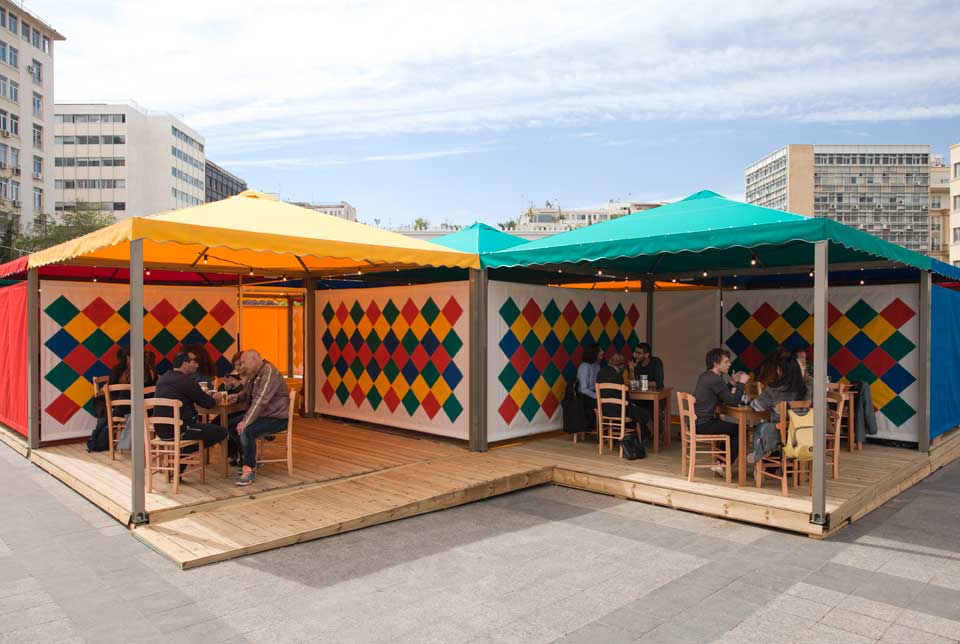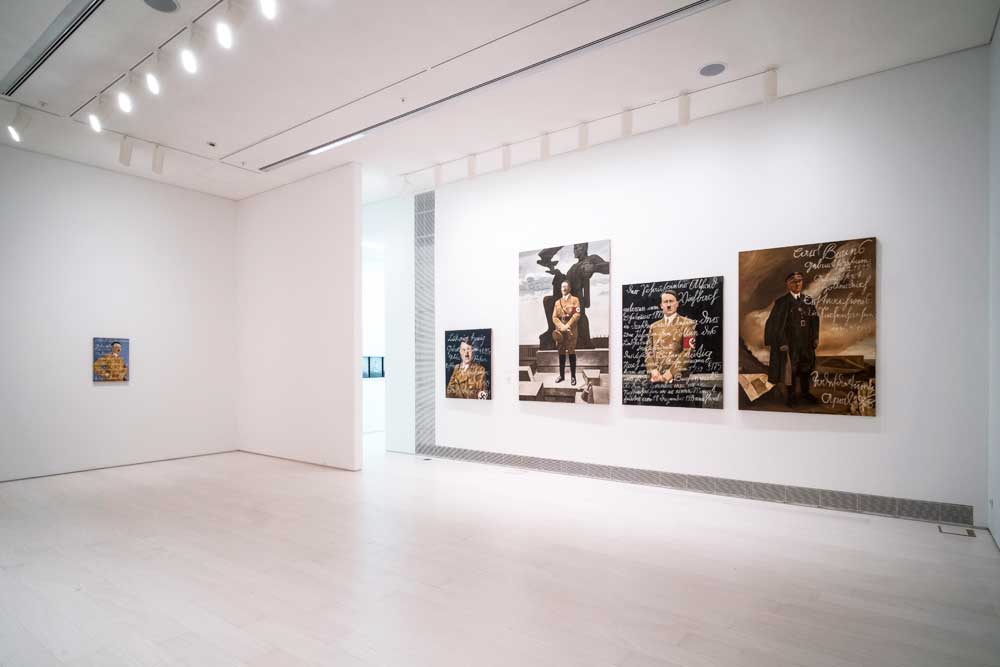« Reviews
documenta 14
Various locations - Athens, Greece
By Santa Nastro
documenta 14 opened in 47 locations in Athens on April 8, shining a light on almost 200 artists. This edition, curated by Adam Szymczyk and a team of 18 other curators, chose the Greek capital as host city for the first time as a prologue to the upcoming quinquennial kermesse festival in Kassel, Germany. Szymczyk wowed the crowds at the press preview with a performance of the Epycicle chorus, composed in 1968 by Greek musician Jani Christou and executed by the entire curatorial team and all of the artists.
The presentation started at the multi-story National Museum of Contemporary Art EMST, opened for the occasion with an exhibition on many levels. The monumental installations of Khvay Samnang, who draws on African traditions, as well as the works by Greek artist Danai Anesiadou, stand out. Another star of the exhibition is the result of research by Piotr Uklanski and McDermott & McGough, which became the installation The Greek Way. Uklanski invited the two artists to present works based on the famous series Hitler and the Homosexuals (2001) as well as his paintings based on stills of Leni Riefenstal’s Olympia (1938). The duo created a painting with the names of homosexuals who were persecuted or assassinated by the Nazi regime on the face and figure of the dictator, functioning as memento mori. EMST also presented a reflection on classical sculpture by Daniel García Andújar, who matches the scientific discourse about the body and the deformities that can materialize, as well as studying the Neoclassical concept of kalos kagathos, or gentlemanly personal conduct.

Danai Anesiadou, ANONEROUSANUS: SOFT DISCLOSURE, 2015–17, installation view, EMST—National Museum of Contemporary Art, Athens, documenta 14. Photo: Mathias Völzke.
At the Athens Conservatoire, which featured the most alternative though perhaps least successful works of the main exhibition, the interventions built by Daniel Knorr, big canvases by Edi Hila, musical instruments in the style of pieces of furniture by Nevin Aladağ, and highly colored, extremely interesting installations by Guillermo Galindo stood out. There was also a place outside for visitors to relax and Joar Nango’s Odeion, a kind of hippy tent.

Daniel García Andújar, The Disasters of War, Metics Akademia, 2017, mixed-media installation, EMST—National Museum of Contemporary Art, Athens, documenta 14. Photo: Mathias Völzke.
At the Athens School of Fine Arts, 25 artists studied the central issues of education and teaching that emanated from Athens. Another highlight took place in the same district, at the Benaki Museum, founded by collector Antonis Benakis in honor of his father, Emmanuel, an influential politician and merchant who immigrated from Alexandria, Egypt. There, the work of 16 artists were featured, including Miriam Cahn and Sergio Zevallos. Also featured, Live and Die as Eva Braun - An illustrated proposal for a virtual scenario, by Roee Rosen recounts, through 10 stations and 66 artworks on paper, the final hour of life of Hitler’s lover while in the bunker before their joint suicide.
In Kotzia Square, one of the most popular gathering places in Athens, Rasheed Araeen, an artist and intellectual and former editor of the famous British magazine Third Text, presented Shamiyaana-Food for Thought: Thought for Change (2016-17). This project consisted of a temporary wooden gazebo decorated with a colored patchwork as well as comfortable seats and tables. Sponsored jointly with the Greek non-profit group Organization Earth, it invited visitors of all races, ages and social conditions to have lunch and dinner within this social and relational space.

Rasheed Araeen, Shamiyaana—Food for Thought: Thought for Change, 2016–17, canopies with geometric patchwork, cooking, and eating, Kotzia Square, Athens, documenta 14. Photo: Yiannis Hadjiaslanis.
At the Gennadius Library, Boubacar Sadek, Mamary Diallo, Anboudalaye Ndoye, Abdou Ouologuem and Seydou Camara show their works as part of Learning from Timbuktu, curated by Igo Diarra. Sadek and Diallo are the last two calligraphy masters in Mali, continuing an ancient tradition.
Finally, at Eleftherias Park, work by artists Abounaddara, Andreas Angelidakis, Roger Bernat and Lala Meredith-Vula was featured, as well as rich musical and performative programming. Among the various events that were notable were the parade of horses and jockeys created by Ross Birrell, which covered the 3,000 kilometers between Athens and Kassel through the Western Balkan countries of Macedonia, Serbia and Slovenia and imitating the Panathenaic parades of the 5th century B.C., as well as the Tschiffely Ride by the Swiss author Aimé Félix Tschiffely.

Piotr Uklański and McDermott & McGough, The Greek Way, 2017, installation view, EMST—National Museum of Contemporary Art, Athens, documenta 14. Photo: Mathias V¬ölzke.
This is mainly a theoretical documenta, as the venues are almost all in closed places and the curatorial group included a “reader,” a textual compendium that goes along with the show catalog as an added consideration. The issue of a distance is discussed, as there is a palpable, stated position against every form of discrimination. This exhibition puts together contradictory realities. While politically the comparison is critical, artistically the discourse is more humanistic, as it investigates the current conservative turn in the West.
But the exhibition was not without controversy. For instance, during the opening, mysterious graffiti that read “Crapumenta 14″ appeared under the Acropolis, while in a more official way, the Athens Biennial, which will close in April 2018 with “Waiting for the Barbarians,” was already raising eyebrows as it clearly questions the German documenta.
(April 8 - July 16, 2017)
Santa Nastro is an art historian, journalist and art critic based in Rome. She is the author of the project arTVision and member of the editorial committee of Artribune. Her texts have been published in Exibart, Il Corriere della Sera, Arte Magazine, Alfabeta2 and Il Giornale dell’Arte, among other publications and exhibition catalogs.
Filed Under: Reviews



































Leave a Reply
You must be logged in to post a comment.